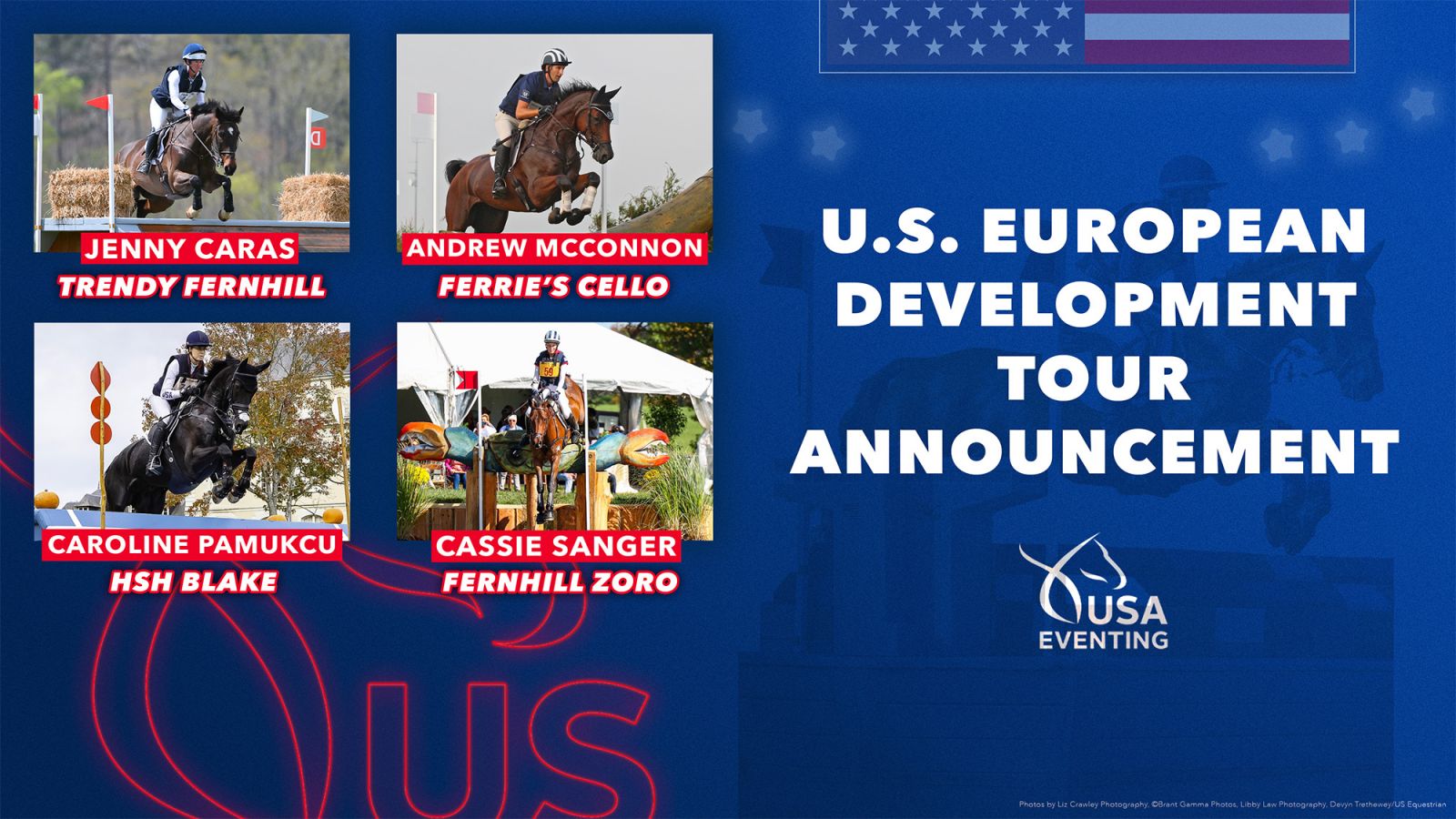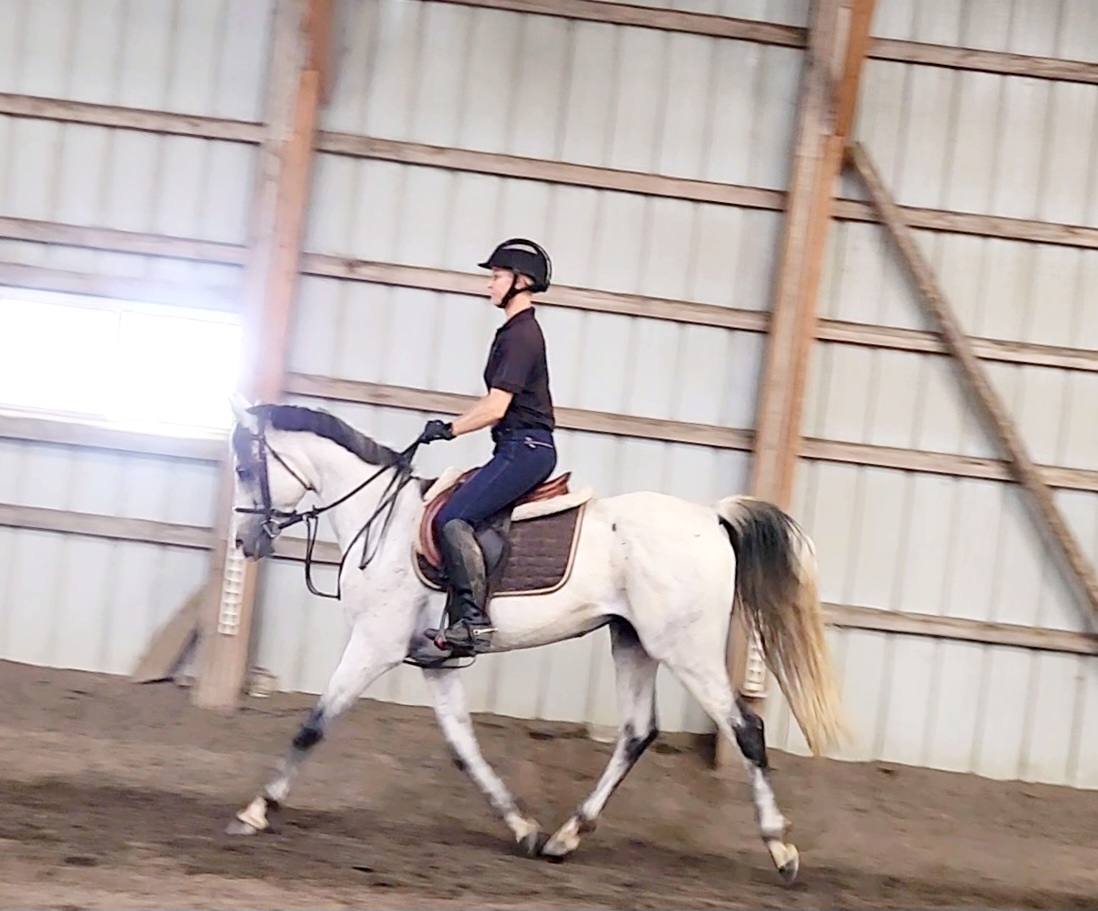
Sierra Lesny, recipient of the second Ever So Sweet scholarship, and her OTTB Pea. Photo by Sally Spickard.
Strides for Equality Equestrians is currently accepting applications for Leg Up Scholarships from the Maryland International Equestrian Foundation. These scholarships are geared towards diverse, young equestrians competing at a grassroots level. Scholarship recipients will receive a credit of $500 towards Maryland Horse Trials entries and schooling opportunities at Loch Moy Farm over the next year.
The Ever So Sweet Scholarship, which is the first of its kind, provides a fully-funded internship opportunity for riders from diverse backgrounds to train with an upper-level professional rider. Qualified recipients will train with Sara Kozumplik at her farms in Virginia and Florida. Special thanks to Edy Rameika for funding the scholarship.
Edy Rameika and Sara Kozumplik Murphy will provide bi-annual sponsored internships for riders to train with Sara. Scholarship recipients will receive funding to immerse themselves in a high-performance training program with Sara at Overlook Farm Equestrian Center in Berryville, VA for three months. During the winter, the scholarship will provide two months of training with Sara in Florida. Sara will determine the exact dates of each scholarship period in coordination with the awardee. The scholarship will cover expenses for full board and training costs for the horse, several lessons per week, housing for the rider, a stipend to cover living expenses, competition fees, and coaching at competitions. Participants will learn to manage, care for, and compete horses in an immersive program and will have the opportunity to work as part of the team in all aspects of running a large, competitive barn.
Riders will also make professional connections that would otherwise be unattainable and play an active role in fostering a more inclusive environment within the sport. “I’ve had to overcome many challenges in my life as an upper-level event rider, but I never had the challenge of feeling like the sport wasn’t easily available to me. This scholarship allows access for those that currently don’t have a clear pathway to fight for their dreams,” Sara said when explaining why they decided to offer the opportunity. The Ever So Sweet scholarship is an important first step toward increasing diversity and inclusion in equestrian sports.
Edy shares the passion for providing opportunities for deserving riders, “Our family loves horses and the sport of eventing. My daughters, Roxanne and Nadine, began riding when they were quite young. They rode and competed through high school, and Roxanne continued into her college career. We are very fortunate. But there are students in underserved communities who have the passion and talent for the sport but perhaps not the means. Roxanne passed away in 2017 but her passion lives on through her family. Nadine, Sara, and I want to honor Roxanne and Nadine’s Native American heritage and their love of eventing through this scholarship in the hopes of helping to keep others’ dreams alive. Ever So Sweet is a song that was beloved to Roxanne and Nadine, especially during those memorable years of riding.”
Applicants must…
- Be a minimum of 16 years old and able to drive.
- Be based in the United States.
- Have access to their own horse, either owned or leased.
- Be dedicated to developing a career path in equine sports.
- Be willing to track expenses for reimbursement.
- Be willing to share their experience as part of the ESS Scholarship in blogs, vlogs, social & print media.
- Be committed to using knowledge gained during the Scholarship period to increase access to equestrian sports for underrepresented groups.
Apply for the Summer 2023 Ever So Sweet Scholarship by May 7 by clicking here.
Applications for this initial round of the Leg Up Scholarship are due April 24, 2023. TWO scholarships will be awarded during this round.
The scholarship can be used to cover the cost of entries, schooling fees, or stabling for events at Loch Moy Farm. Scholarship funds may be used at any of the events in the Maryland Horse Trials calendar. The scholarship period is one year after the date the recipient enters their first event. After this period unused scholarship funds will expire.
This scholarship is geared towards young riders who are just starting their competitive careers. Loch Moy offers a variety of fun and accessible opportunities throughout the year for grassroots riders to learn and compete. Staff at SEE and the Maryland Horse Trials are happy to assist scholarship recipients with planning how they will use their scholarship funds to take advantage of the many exciting events on their calendar.
Applicants should be…
- Young people riding at a grassroots level who would like to compete at the elementary, beginner novice, or novice levels.
- Local to Loch Moy farm and able to arrange a suitable horse and travel to the venue. Scholarship funds can also be applied towards stabling. Recipients do not need to own their own horse, or use the same horse throughout the year. Participants in riding school programs are encouraged to apply!
- Ready to tell us how this scholarship would help them advance their riding goals.
- Enthusiastic about increasing access to equestrian sports for underrepresented groups.
- Willing to share their experience as part of SEE blogs, vlogs, social & print media.
Scholarship recipients will be subject to the rules and requirements of the events they enter.
Nestled in the hills of Adamstown, Maryland, the Highlands at Loch Moy Farm provides the perfect setting and facility for Horse Trials, Cross-Country Schooling, and other exciting community and sporting events. Just 15 minutes from Frederick, Maryland, and 30 minutes from Leesburg, Virginia.
The Maryland Horse Trials hosts back-to-back weekends of USEA Recognized Horse Trials as well as many other schooling events and clinics.
The Maryland International Equestrian Foundation (MIEF) is dedicated to supporting equestrian sport from grass roots to FEI level at Loch Moy Farm, and committed to providing funding for the development of dedicated riders from diverse backgrounds to compete at the top levels of our sport.
In addition to sponsoring SEE Leg Up Scholarships for grassroots riders, MIEF also offers scholarships equivalent to riders competing at the 1*, 2*, 3* and 4* levels at the July Maryland International.














































